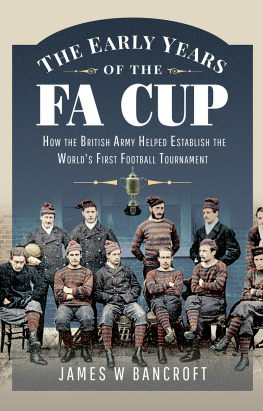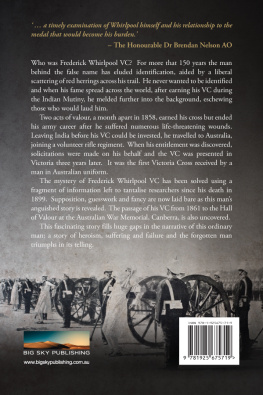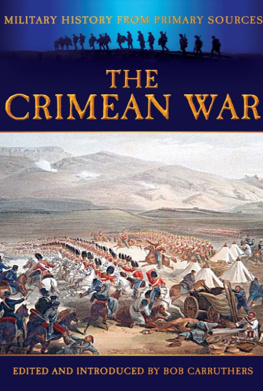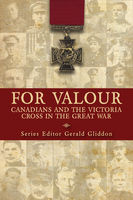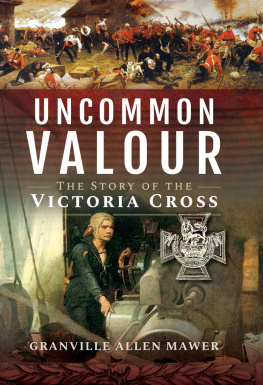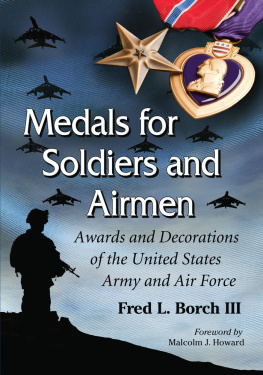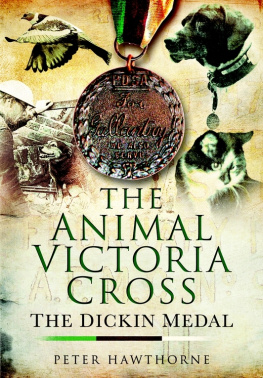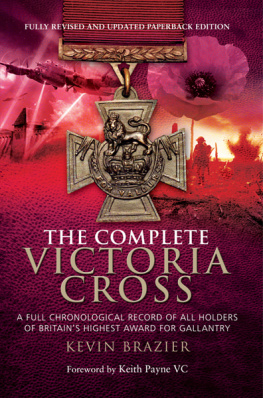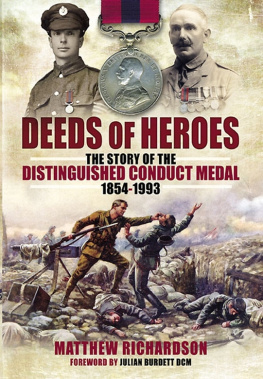THE VICTORIA CROSSES OF THE CRIMEAN WAR
The Men Behind the Medals
This edition published in 2017 by Frontline Books,
an imprint of Pen & Sword Books Ltd,
47 Church Street, Barnsley, S. Yorkshire, S70 2AS
Copyright James W. Bancroft
The right of James W. Bancroft to be identified as the author of this work has been asserted by him in accordance with the Copyright, Designs and Patents Act 1988.
ISBN: 978-1-52671-061-1
eISBN: 978-1-52671-063-5
Mobi ISBN: 978-1-52671-062-8
All rights reserved. No part of this publication may be reproduced, stored in or introduced into a retrieval system, or transmitted, in any form, or by any means (electronic, mechanical, photocopying, recording or otherwise) without the prior written permission of the publisher. Any person who does any unauthorized act in relation to this publication may be liable to criminal prosecution and civil claims for damages.
CIP data records for this title are available from the British Library
For more information on our books, please visit
www.frontline-books.com ,
email
or write to us at the above address.
Great Britain has produced a race of heroes who, in moments of danger and terror, have stood as firm as the rocks of their own native shores, and when half the world has been arrayed against them have fought the battles of their country with heroic fortitude.
Sergeant Major Timothy Gowing, 7th Royal Fusiliers
Introduction
For the first time in the history of the coveted medal all 111 recipients of the Victoria Cross for the Crimean War have been brought together exclusively in a single publication; to tell the stories of who they were, how they gained the Victoria Cross and what happened to them afterwards.
Most of the information for this project is taken from the J.W.B. Historical Library, compiled over four decades, and the narratives of the Victoria Cross actions are based on the recipients own account if they left one, the citations in the London Gazette and regimental archives and histories. The J.W.B. files concerning biographical details are more comprehensive; however, I decided only to include information that I believe presents interesting anecdotes and informative stories to the general reader and historian about the men who did the fighting, as opposed to the politics of the war and tedious facts and figures. It is not definitive no individual can make such a claim for a publication of this nature, but it is a project that needed to be attempted and time will tell if I should have been the person who did so!
I have cross-referenced my files with up-to-date official sources to the best of my ability, and I have given a great deal of attention to checking the correct spelling of the names of people and locations, burial places and new memorials, and dates of awards and promotions. I made every effort to contact museums and other establishments to get up-to-date information on the whereabouts of medals and their accessibility.
The men recorded here displayed valour resulting in many deeds of exceptional courage which are a regular occurrence in the illustrious annals of the British Army. Among them are heroes who had the guts to put themselves in mortal danger by picking up live shells that could have exploded and blown them apart at any moment, gallant troopers who took part in a cavalry charge that they knew was doomed before it began and they were about to be cut to pieces, and valiant individuals who had the audacity to sneak into unknown territory to take the conflict into the enemys back yard and risk capture and ill-treatment. Many men performed more than one act that was considered worthy of the award of the Victoria Cross, and Sergeant John Park of the 77th Regiment is the only man ever to have five actions mentioned in his citation for the Victoria Cross in the history of the medal. Seven men gained the Distinguished Conduct Medal in addition to the Victoria Cross, and of the twelve awards of the naval Conspicuous Gallantry Medal six men also won the Victoria Cross. Six men who received the Victoria Cross for the Crimean campaign were born in Devon, more than in any other county. At the time of the campaign my home town of Eccles was in Lancashire and not a district of the City of Salford, as it is today, and my research suggests that it is the only small town of its kind which can boast of being the birthplace of two men who became recipients of the Victoria Cross for the Crimean War.
Most of the rank-and-file soldiers and ordinary sailors who took part in the campaign were rough-and-ready lads from the coal mines, farms and dark satanic mills in and around the tough city slums, and their staunch loyalty to their regiment and comrades gave them formidable fighting abilities. Unfortunately, in a time when post-traumatic stress disorder was not even recognised let alone treated with consideration, many men who survived were affected badly by their injuries and what they had witnessed. Some came back to Britain to face a struggle for survival equal to that which they had endured in the Crimea, and they never recovered. Several committed suicide, and some died in destitution. Some died while still serving with the colours and others under unfortunate circumstances after the war, five of these being buried or lost at sea. In contrast to this, sixteen men were knighted for their distinguished careers. Many men were the sons of Peninsular and Waterloo veterans.
News of the fall of Sebastopol was received with immense excitement and enthusiasm, and many cities celebrated victory in the Crimea with displays of illuminations, fireworks and victory processions, and there was general feasting and rejoicing to celebrate the final peace. However, 20,000 men lost their lives, the majority from disease, and most of the men who had fought in the East found little to celebrate.
Although he was not a recipient of the Victoria Cross, an example of how men became unstable and found it difficult to cope with life after the Crimea was Lieutenant Richard Molesworth of the 19th (1st Yorkshire, North Riding) Regiment. He received a severe wound during the final attack on Sebastopol, when a piece of shrapnel hit him and embedded itself in the crown of his head. Surgeons had failed to remove it completely and it caused him terrible stress. He became engaged to Mary Louisa Stewart, who was a prominent Victorian childrens writer under the name of Mrs Molesworth. However, she noticed that soon after his return from the Crimea he had shown signs of mood swings and a very violent temper, which had given her mother cause for concern. Louisa played it down and trusted that their love for each other would help to keep it under control, and they married in 1861. Richard became a major, and they had several children, but he eventually became too unstable and had to retire from the military. Their domestic problems worsened, Richard became irresponsible and financially inept, and with the approval of his family Louisa was forced to take their children away from him and live in France. She eventually filed for a divorce.


